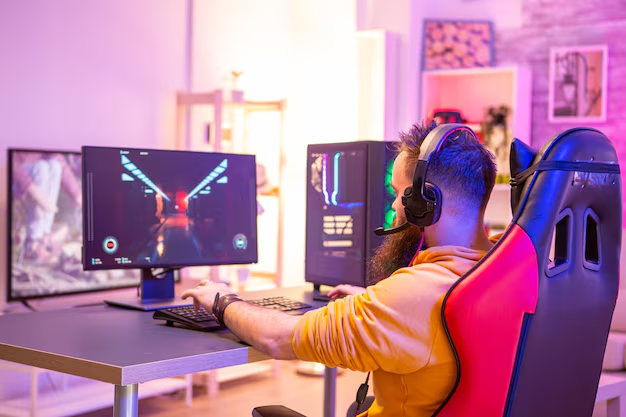The digital design industry is constantly evolving, and with every new advancement, designers discover fresh opportunities to enhance visuals, user experiences, and creative workflows. Among the latest topics gaining traction is the concept of the 1.5f8-p1uzt texture, a term that combines both technical specificity and creative potential. While at first glance it may sound like an experimental code or algorithmic input, the 1.5f8-p1uzt texture represents a broader movement in digital rendering and material simulation that is shaping how we perceive textures in both virtual and physical environments.
What is the 1.5f8-p1uzt Texture?
The 1.5f8-p1uzt texture is a unique designation used within certain design and simulation frameworks to describe a material surface with advanced layering properties. Unlike traditional flat textures, it offers a more dynamic representation of depth, light reflection, and structural complexity. The “1.5f8” portion typically hints at the scale or mapping coordinates used in rendering systems, while “p1uzt” may reference a pattern classification within a design engine. Together, these parameters define a sophisticated surface that behaves more realistically in digital environments, giving creators the ability to mimic intricate materials with minimal computational cost.
Why Designers Are Turning Toward Advanced Textures
One of the primary reasons the 1.5f8-p1uzt texture has captured attention is its versatility. Whether applied in gaming environments, architectural visualization, or product design, it allows for seamless integration of realism without overwhelming the rendering system. Traditional textures often demand large amounts of memory and processing power to achieve convincing details. However, this new texture format is optimized to deliver sharp detail with efficient resource management. Designers working with real-time engines such as Unity or Unreal Engine particularly benefit from this optimization, as it directly impacts frame rates and user experience.
Applications Across Industries
The 1.5f8-p1uzt texture is not confined to a single niche. Instead, it is gradually becoming a flexible tool across multiple industries. In gaming, it enhances immersion by bringing lifelike details to terrains, character outfits, and environmental assets. In architecture, it is used to simulate realistic wall finishes, flooring, or furniture materials, helping clients visualize projects with a level of clarity that was once difficult to achieve. Product designers also utilize this texture to prototype surfaces virtually, enabling them to experiment with finishes before committing to physical prototypes. This combination of adaptability and realism explains why the texture is becoming a go-to element for professionals who want both accuracy and efficiency.
Technical Characteristics of the Texture
The technical foundation of the 1.5f8-p1uzt texture lies in its ability to integrate multi-layered mapping with smart reflection algorithms. It is often supported by normal mapping, specular adjustments, and procedural noise integration, all of which help simulate roughness, glossiness, and natural imperfections. For instance, when light interacts with the 1.5f8-p1uzt texture, it does not simply bounce off in a uniform manner. Instead, the reflection is scattered in ways that mimic real-world surfaces like stone, fabric, or metallic coatings. This nuanced behavior adds a sense of authenticity to digital projects.
The Role of AI and Machine Learning
Recent years have seen artificial intelligence play a growing role in texture creation. The 1.5f8-p1uzt texture often benefits from AI-driven procedural generation, which ensures that no two applications of the texture look identical unless intentionally replicated. This removes the repetitive patterns often seen in older textures and allows for endless variation. Machine learning models can analyze real-world images and apply their findings to generate new versions of the texture that appear convincingly organic. This synergy between technology and creativity is one of the driving forces behind its adoption.
Impact on User Experience
User experience in digital platforms is highly influenced by the realism and believability of visuals. When textures appear flat or artificial, immersion breaks down. The 1.5f8-p1uzt texture, however, provides depth and organic irregularity, ensuring that viewers engage with environments more naturally. Gamers may not consciously notice the technical underpinnings of a well-rendered texture, but they immediately feel the difference in the fluidity of immersion. Similarly, clients viewing architectural renders can better imagine themselves in a finished space when surfaces exhibit lifelike qualities.
Challenges in Implementation
Despite its advantages, the 1.5f8-p1uzt texture is not without challenges. Implementing it requires compatible rendering engines and sufficient GPU capabilities. For smaller studios or independent creators, this may mean upgrading hardware or investing in new software licenses. Furthermore, because the texture relies on advanced algorithms, improper configuration can lead to artifacts such as distortion, pixelation, or misaligned lighting. As with any innovative tool, the key lies in balancing experimentation with technical mastery.
Future of Textures in Digital Design
Looking ahead, the role of advanced textures such as the 1.5f8-p1uzt texture will only grow stronger. As virtual reality, augmented reality, and mixed reality environments continue to expand, demand for hyper-realistic and efficient textures will increase. We can expect further refinements in how textures are generated, compressed, and applied across platforms. Eventually, we may see cloud-based repositories of textures that adapt dynamically based on project requirements, enabling creators to instantly access customized surfaces with just a few clicks.
Conclusion
The 1.5f8-p1uzt texture represents more than just another design parameter; it is a glimpse into the future of digital material representation. By combining technical precision with creative freedom, it empowers designers, developers, and artists to push the boundaries of realism in digital environments. Although its implementation comes with challenges, the benefits it offers in terms of immersion, efficiency, and versatility make it a highly valuable asset. As industries move toward more integrated and immersive digital experiences, textures like 1.5f8-p1uzt will undoubtedly play a central role in shaping the visual landscape of tomorrow.



